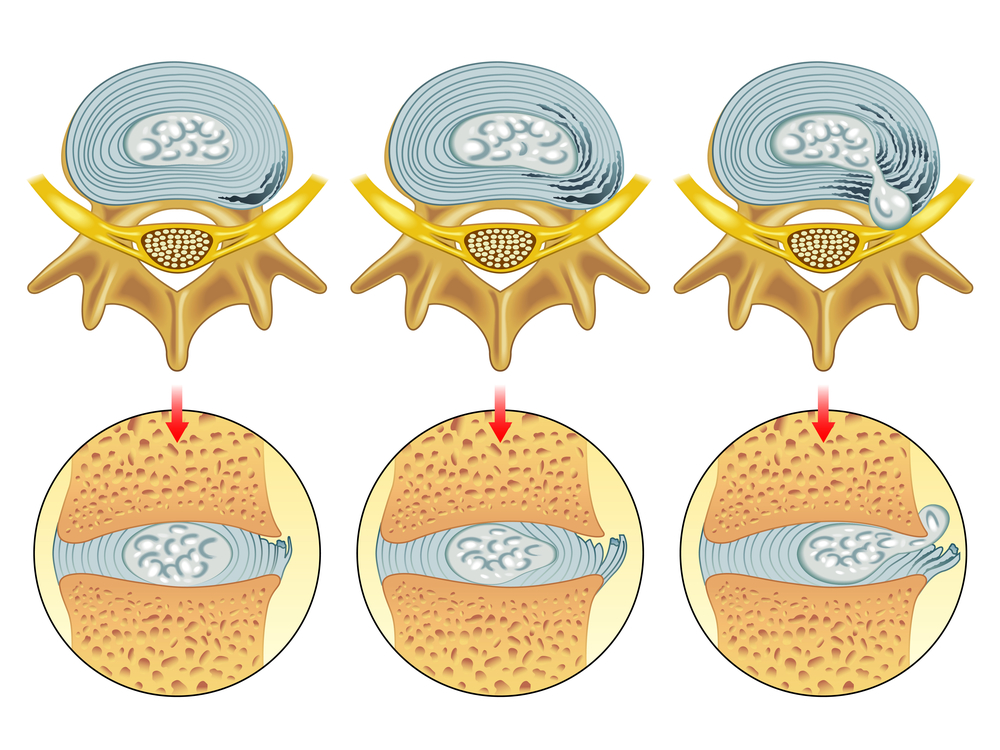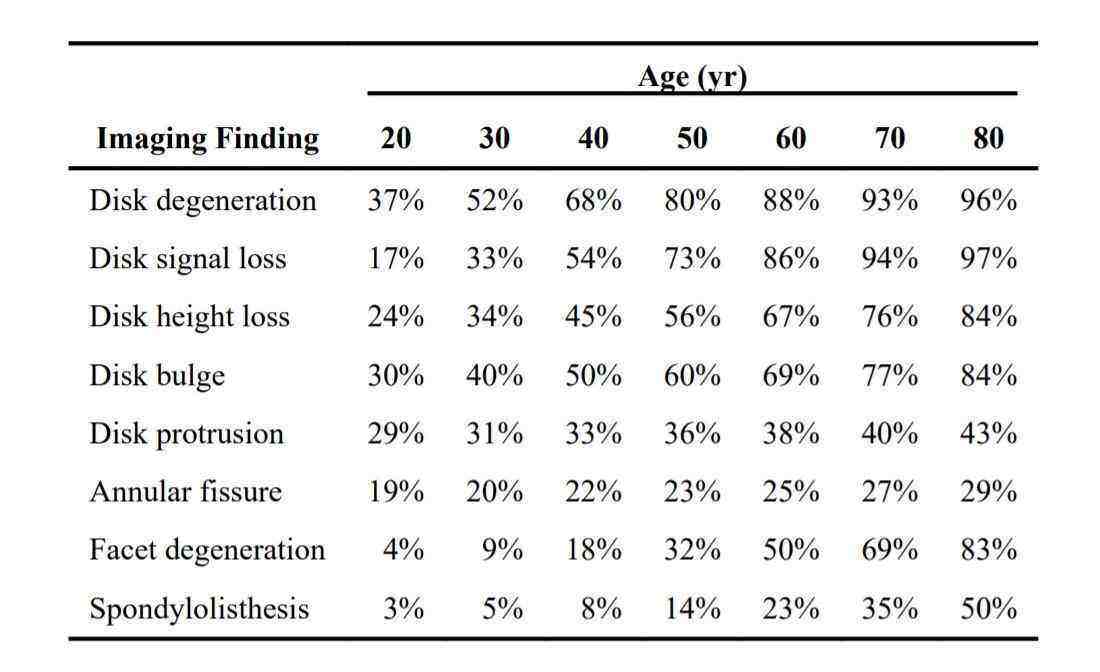One of the most common questions I get asked is undoubtedly “How long does sciatica last?”
Usually, it’s a frustrated individual who has suffered for a long time who asks this question – and I can completely relate to them. I would be asking the exact same question too – it’s only natural to want to know how long you’ve got to put up with the suffering for. Today, I’m going to try and answer the question of how long sciatica lasts for.
How Long Does Sciatica Last?
To answer this question, we first need to know a few things.
First and foremost, we need to know what your sciatica is caused by. Once we know the likely cause of your sciatica, we can better predict how long sciatica is going to last for.
And no, this doesn’t necessarily mean you need to run off and pay for a $500 MRI scan. Usually, a clinical diagnosis from an experienced doctor or physical therapist is enough to pinpoint the cause of your sciatica. It is only in unusual or very persistent cases that we recommend getting an MRI scan. You can read about whether a scan might be right for your circumstances here.
We also need to know how long you’ve already suffered for, and what your symptoms are like currently. Have they been getting worse? Have they been ‘up and down’? All of these factors will give us clues about how long sciatica is likely to last for.
Some people will have sciatica that comes and goes for a long time. We call these ‘episodes’. They can come and go within a few days, or last longer. Again, it depends on the cause.
Now, let’s talk about the common causes of sciatica and how long sciatica lasts with each one.
How Long Does Sciatica Last with a Disc Bulge?
Between each vertebra in the spine is a disc – a tough sac made up of strong cartilage, filled with fluid.
Although the discs are much stronger than a donut, it might help to imagine the design of the discs like a jam donut – made up of tough outer layers filled with fluid.
The discs are very important. They help the spine move normally. Without them, we couldn’t walk, stand or move our spines.
Over time, the discs in the spine can suffer normal wear and tear that occurs from repetitive movements throughout our lives. This process happens to everyone.
However, if one part of the disc has weakened more than others, it can lead to something called a disc bulge.
This is where the strong outer fibres of the disc split and the inner part of the disc “bulges” out towards the nerve roots at the back of the spine.
You can read more about disc bulges here.
In the image below, a disc bulge can be seen in the MIDDLE picture. (The end picture is a disc herniation – this is a worse version of a disc bulge).

If the disc bulge touches the sciatic nerve, the symptoms that follow are called “sciatica”.
If you are suffering from sciatica due to a disc bulge, the problem often lasts for a number of weeks.
In healthy people, a disc bulge usually repairs itself within the spine over the course of around 12 weeks. However, not everyone suffers for that long – sometimes the pain can go away within a couple of weeks, even though the disc is still healing.
The body is very clever – yes, even yours! It will re-absorb the disc bulge over time for MOST people. One of the KEY parts of ensuring this happens effectively is working hard to not aggravate the disc bulge. This means trying to maintain pain-free positions for as long as possible.
Unfortunately, not everyone’s sciatica lasts for only 12 weeks with a disc bulge. Certain things can slow down the process of recovery.
Factors that can slow down recovery from a disc bulge include:
- Being a smoker – smoking delays recovery of almost every tissue in the human body
- Being a drinker – drinking has a negative effect on healing
- Being diabetic – having high sugar levels in the blood interferes with healing
- Being overweight – this increases the levels of inflammation in the body and can delay healing
- Being generally unhealthy – while you may ‘look’ healthy, if you have high levels of inflammation in the blood or a weakened immunity, you’ll probably take longer to heal from a disc bulge
Disc Bulge Summary
How long does sciatica last?
Usually 6-12 weeks. For some this will take longer and for some it will be shorter.
What can I do to get better faster?
- Avoid painful positions (these products may help)
- Start using an exercise program specifically designed to encourage disc healing (like this one here)
- Get HEALTHY! This means eating right, not smoking and not drinking
- Try my proven 5 minute exercise program – sign up below:
Are You Looking for RAPID Relief from Sciatica?
My good friend, colleague and fellow international sciatica expert, Dean Volk, has a brand new sciatica relief video course available – and I’m delighted to be an official sponsor!
Check out Dean Volk’s “Kicking Sciatica OUT of the Butt!” Online Pain Relief Course Here!
I can proudly recommend Dean and his course for sciatica sufferers – because I’ve seen his incredible results first-hand. You can check out his course (and get lifetime access to the videos and bonus content) by clicking HERE.
How Long Does Sciatica Last with a Disc Herniation?
A disc herniation is basically a more advanced version of a disc bulge. A disc herniation occurs when the inner material of the disc is pushed out of the disc. The inner material usually then irritates a nerve root (along with the pressure that’s already there from the disc bulge). Not a happy combination.
Disc herniations are generally more painful than disc bulges. This is because of the double-trouble of the bulge touching a nerve and the chemical effect once the inner material has escaped from its disc.
Now, there are a lot of misconceptions about disc herniations. Many people believe that disc herniations can’t get better on their own, without surgery.
This is not true. The body is designed to clear away the debris from the disc herniation and it does this very well. However, it seems that this doesn’t happen for everyone. We don’t fully understand why some people do get better from a herniation, while others don’t.
I have a friend who had this exact injury about 6 years ago. He was very fit and active, in his twenty’s, and injured his back in a gym session.
At the time, I wasn’t a sciatica specialist or even a physical therapist, so I couldn’t help him and I didn’t understand what he was going through. Luckily, he met a great physical therapist who knew exactly what was wrong and gave him the RIGHT exercises to address the issue (I can’t stress enough how CRUCIAL this is!)
Over a period of about 6 months, my friend worked and worked on these exercises and gradually, bit by bit, he improved to the point where he could train, work and enjoy life just as he had before. I should say that near the start of this story, one doctor told him he “almost certainly” would need surgery for this issue – but he chose not to go down that path.
Sciatica can last for 6 months with a disc herniation, and the first month or two is likely to be pretty bad. You’ll need to make sure you’re prepared for this.
I think that one of the reasons my friend did so well was because he was already healthy and fit. He lived a ‘clean’ lifestyle with a good diet and plenty of exercise. This set him up for a much shorter period of suffering than he would’ve had if he wasn’t this way already.
To me, this shows that the recovery time from a disc herniation swings heavily on what you can do to minimise inflammation and maximise general health.
Factors that can slow down recovery from a disc herniation include:
- All the factors in the disc bulge example above, plus…
- Being dehydrated – your body needs water to heal, especially in a disc injury where dehydration leads to a loss of water in the discs and worsening disc bulges
- Not getting at least 10 minutes of exercise per day, even after the injury. The key is choosing a type of exercise that DOESN’T aggravate your symptoms. Consider walking in a pool, swimming backstroke, the cross-trainer in the gym as a few alternatives if walking is painful.
- Not being persistent with your rehabilitation – Kudos to my friend, he stuck with his exercise program for months. Maybe there were days when he felt he was still at square one, but he pushed on through. SO many people fall at this hurdle when they feel no change in the first couple of weeks.
Disc Herniation Summary
How long does sciatica last?
Usually 3-6 months. For some this will take longer and for some it will be shorter. A lot depends on your general health, not just the specific exercises you do.
What can I do to get better faster?
- Avoid painful positions (these products may help)
- Start using an exercise program specifically designed to encourage disc healing (like this one here) – and be persistent with it!
- Take general, comfortable exercise where possible. Even if this means walking a hundred yards down the road and back.
- Again, get HEALTHY! This means eating right, not smoking and not drinking.
How Long Does Sciatica Last with Piriformis Syndrome?
In most people, the sciatic nerve passes right by the piriformis muscle. For these lucky people, piriformis syndrome is very rare.
However, in around 10% of the population, the sciatic nerve actually passes THROUGH the piriformis muscle. In these people, when the piriformis contracts or spasms, it can sometimes compress the sciatic nerve, resulting in pain that starts in your buttock and can run all the way down your leg.
We call this condition piriformis syndrome, and as anyone who has suffered from it can tell you, it is extremely painful!
Piriformis syndrome can be caused by a variety of factors. It is usually triggered over a long period of time rather than in an isolated incident.
Some of the common causes of piriformis syndrome include too much repetitive activity all in one go. Another common cause of piriformis syndrome is prolonged sitting; like in an office job.
Some of the repetitive actions that can cause piriformis syndrome include running and walking, which makes piriformis syndrome a very common running injury.
The main factor that determines how long sciatica lasts when piriformis syndrome is the culprit is what caused it in the first place.
We know that piriformis syndrome can be caused by the following:
- Sitting for too long on an inappropriate chair – this can irritate the piriformis and cause it to ‘lock up’. It’s why piriformis syndrome is common in both cyclists and office workers.
- Having a muscle imbalance in the pelvis – weak gluteal muscles and an over-worked piriformis also causes piriformis syndrome. This affects both runners and non-athletes. It is more common in women, probably because of their naturally wider-set pelvises, which means the gluteal muscle group need to be stronger to support walking and other activity.
If your piriformis syndrome is caused by sitting for a long time on a poorly supported chair leading to irritation of the piriformis and sciatica as a result, you can usually fix the issue quite quickly. You’ll need to avoid sitting in that chair first and foremost, and add suitable support to your bottom.
I’d recommend a ring cushion, such as the following:
Supportiback® | The #1 Donut Seating Cushion
This gel cushion allows excellent comfort at work while relieving the pressure on your piriformis. It is discrete and portable, making it a great choice for the office.
Click HERE to view the product
If your piriformis syndrome was caused by a muscle imbalance in the pelvis, it probably won’t get better until you specifically address that muscle imbalance.
This takes some hard work and roughly 3 months of consistent work. You can click here to read more about the proper rehabilitation of piriformis syndrome caused by a muscle imbalance.
Mostly, the work you’ll need to do is strengthening of the gluteals. You may also find stretching helpful and this can be a really effective tool for pain relief.
Piriformis Syndrome Summary
How long does sciatica last?
Depending on the cause of your piriformis syndrome, you can get it better within 3 weeks up to 12 weeks usually. For some, piriformis syndrome can be more persistent. It’s best to get guidance from a qualified piriformis syndrome expert when choosing the right exercises for you.
What can I do to get better faster?
- Avoid sitting on the affected buttock for prolonged periods of time
- Don’t aggressively stretch the affected side! You may be much better off stretching the GOOD side instead. If you find your symptoms are worse after you stretch the affected side, that’s a clear sign that you’re making it worse.
- Start strengthening the gluteal muscles on the painful side. Go gently but be persistent – strength changes take around 8-12 weeks to become apparent.
How Long Does Sciatica Last with Arthritis
For the purpose of this article, I am going to refer to all manner of age-related changes in the lower back as “arthritis”. While this might not be strictly specific, the recovery process and rehabilitation for all age-related changes is similar in a broad sense.
So, what is arthritis in the lower back?
Arthritis refers to a wearing of the joints and discs in the lower back. This is a normal process that everyone goes through. However, in some people, these changes can lead to pain.

As we age, our discs dry out and lose height, the bone around our joints thickens, our joints become stiffer and we lose the cartilage that helps to lubricate movement in our spines. All of these changes equate to a smaller and less lubricated space for the nerve roots to exit the spine from, sometimes causing them to become compressed.
When arthritis in the back leads to a pinching of one of the nerves, sciatica can happen.
However, just because you’ve currently got sciatica due to arthritis, it doesn’t mean it’ll ALWAYS be this way.
I know this might fly in the face of the way you think about arthritis right now. You might think that when the effects of aging become painful, you’ll be stuck with it forever and it’ll continue to get worse. This isn’t necessarily true.
For most people with arthritis, the problem isn’t the arthritis itself – it’s the stiffness and tightness that occurs as a result.
Now, as a physical therapist, I built a career on helping people loosen stiff joints and stretch tight muscles. So, yes, your symptoms CAN usually improve, even if arthritis is the cause!
I’m not saying you’ll be able to reverse the aging changes in your joints and discs – that would be unlikely. But these changes don’t necessarily have to equate to pain.
There’s a famous study that I’ve referenced in the past, where the researchers found some degree of arthritis in the spine in almost EVERYONE over the age of 40; yet NONE of the people they tested had back pain or sciatica! You can see the findings below (Brjinski et al., 2014):
So, how do we relieve sciatica in someone with arthritis in the spine?
The answer to this question is usually a combination of general activity and targeted, specific exercises that break down stiffness and restore movement.
You can look here for some basic examples, or follow this link here for a complete program showing exactly how to do this.
Arthritis Summary
How long does sciatica last?
Usually, you’ll feel significant changes in stiffness (and therefore pain) within 6-8 weeks of following a targeted exercise program specific to YOUR goals. Again – for some people this takes longer, while for others there will be a significant change in as little as 2 weeks. I’ve experienced both of these scenarios and it’s difficult to tell who will respond quicker.
What can I do to get better faster?
- Avoid the activity that specifically flares up your sciatica
- Keep active and mobile – you should be moving your spine every day as long as it feels comfortable and natural
- Take a course of targeted exercises specific for your problem
- Again, it’s important to be healthy generally. Losing weight will help in 80% of cases. (Click here to read how to do this)
How Long Does Sciatica Last with Pregnancy
The last scenario we’re going to cover today is sciatica during pregnancy, and how long it lasts.
Sciatica during pregnancy is unfortunately a fact of life for MANY women – over 70% of pregnant women will experience it at some point during their term.
Unsurprisingly, it is most common in the third trimester. This is because the weight of the baby adds a significant load to poor Mum’s frame! Because the baby is carried in front of Mum, this changes her posture and puts extra pressure on her discs. If there’s a long-standing, harmless disc bulge in her back that she never knew about before, the weight of the baby is enough to turn it into a problem.
Luckily, sciatica during pregnancy usually goes away as soon as the baby is born.
For many, sciatica during pregnancy comes and goes and isn’t present all the way through the term.
There are some things you can do to relieve sciatica during pregnancy. For example, gentle stretching exercises will help – these keep your back mobile and take some of the stress away from the lower back.
If you stretch the muscles in your legs too, this can relieve any “pulling” forces on the pelvis and help the back further still. There are some good suggestions for how to do this in this article here. Only follow the ones that are comfortable to you and never put pressure through the tummy when pregnant.
Pregnancy Summary
How long does sciatica last?
Usually, you’ll feel much better after you’ve given birth and that extra weight is gone! However, sciatica during pregnancy doesn’t always last for the whole term, so just because you’ve got it now doesn’t mean it’ll be there until week 40!
What can I do to get better faster?
- Avoid any activity that specifically flares up your sciatica
- Keep active and mobile – regular walks will help (but make sure you’re getting enough rest too)
- Drink plenty of water
Summary
I hope this article has answered your questions around how long sciatica lasts. If you’ve suffered for longer than the times I suggested in this article, you probably need to make some changes. Many times, these changes involve getting generally healthier, being more active, or taking a specific course of exercises that are proven to relieve your symptoms.
How long do your sciatica episodes tend to last? Have you spotted any patterns? Leave a comment below and let me know!
Are You Looking for RAPID Relief from Sciatica?
My good friend, colleague and fellow international sciatica expert, Dean Volk, has a brand new sciatica relief video course available – and I’m delighted to be an official sponsor!
Check out Dean Volk’s “Kicking Sciatica OUT of the Butt!” Online Pain Relief Course Here!
I can proudly recommend Dean and his course for sciatica sufferers – because I’ve seen his incredible results first-hand. You can check out his course (and get lifetime access to the videos and bonus content) by clicking HERE.
The information on Overcome Sciatica should never be used as a substitute for medical advice from a doctor. Never put into action any tips or techniques from Overcome Sciatica without checking with your doctor first. Please see full terms of use here.






